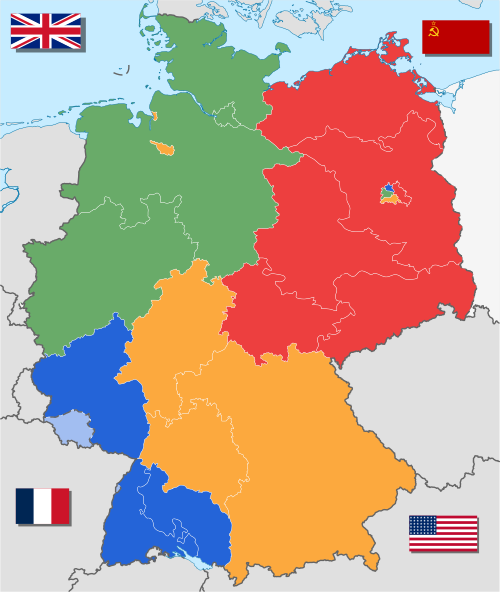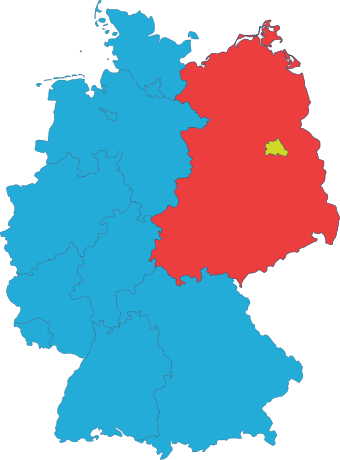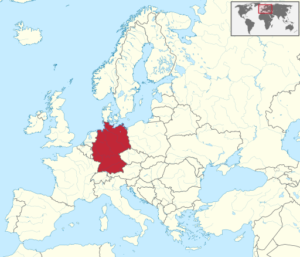If you found this post via search, it probably makes sense to start with the first post in this series. The link to the full series is above.
In this series of posts I examine seven nations whose economic vitality transformed them from poor countries into rich countries.
The focus of this post is the rebuilding of Germany after WW2.
Table of Contents
A ruined state
Everyone knows Germany, and many countries in Europe were badly damaged by WW2.
- Industrial output down by one third
- 20% of housing was destroyed
- Half of food production stopped
- Many men aged 18 to 35, the “heavy lifters” of the work force, were dead or permanently maimed
Before Germany fell, the German government rationed Germans to 2,000 calories a day.
After the allies took over and did the math, they saw food was going to run short, so they reduced the daily ration to 1,000 to 1,500 calories a day.
Immediate post war government
When Germany surrendered in April of 1945, ending the war in Europe, the government of Germany simply vanished. One day Germany had a government, the next, it didn’t.
When the allies who occupied Germany issued an order, there was no government entity in existence to carry it out.
So the four allied nations in Germany at that time (the United States, the UK, France, and Russia) divided Germany into four administrative zones.
Millions of people were homeless, there were chronic food shortages, the allied forces had 1.5M German POWs they had to do something with, and Germans were arriving from other parts of Europe where they were no longer welcome.
The immediate task was creating order out of chaos, and for the next few years, each administrative zone was governed individually, by the military command occupying it.
The three western zones became known as the western occupation zone, as they adopted similar, and in some cases, identical policies.

The new currency
For example, one of the issues was currency stability.
The Reichsmark was worthless and many transactions within the western occupation zone were barter.
So 1948, the western allies replaced the Reichsmark currency with a new currency, the Deutschmark.
The split
In 1949, Germany was formally split into two nations, The Federal Republic of Germany (the west), and the Germany Democratic Republic (the east).

In 1952 the government of East Germany closed the border to West Germany and they were to stay separate until 1990.
Stability
A key to maintaining the stability needed to pursue economic development was to not dismantle the regulatory institutions of the past but to draw heavily upon them: Understanding West Germany Economic Growth in the 1950s.
Which makes sense.
Foreign investment
Leading up to and during the war, trade with allied nations ground to a halt.
The German government created something called a Sperrmark, which is how German firms paid off obligations to non-Germans. However, money paid under the Sperrmark programs never left the German banking system and was of no value to the non-Germans at the time, even though the debts of the German debtors were considered to be discharged.
In the immediate aftermath of the war, non-residents could not be a party to any financial transactions within Germany.
Allowing foreign investment
Between 1948 and 1950 new regulations allowed holders of Sperrmark accounts to start investing their funds into German assets.
Which started foreign investment activities.
The Marshall Plan
The Marshall Plan was a program of rebuilding for western Europe.
It was sold to the western world as a means of countering communist influence in Europe.
It was part of the overall cold war strategy of containing communism.
It ran from 1948 to 1951 and provided funding for the rebuilding of 17 countries.
During this period, GDP rose between 15 and 25 percent for the recipient nations, one of whom was Western Germany.
Immediate domestic policies
Who was Walter Eucken?
Walter Eucken is considered by some to be the most important person in Germany’s rebirth.
He was a German economist whose ideas about how to rebuild Germany, which he published before the war ended, caught on when a protege of his came to the attention of the American forces running the American occupation zone.
Walter Eucken is credited with creating the idea of the “social free market”.
Who was Ludwig Erhard?
Ludwig Erhard is the protege mentioned above.
Even before the war ended, he wrote an essay about Germany’s financial position which started from the premise that Germany lost the war.
His work and his ideas came to the attention of US intelligence forces who sought him out.
The social free market
While we take the German welfare state for granted today, in 1944 it was a radical idea.
An experimental mix of free-market capitalism and government spending for social programs to benefit a very broad segment of the population, which includes unemployment insurance, public housing, universal healthcare, post-secondary education, old-age pensions, etc.
I think it’s safe to say it worked and continues to work.
Cartel cleansing
Cartels are monopolized business enterprises and practices, which for obvious reasons can not operate without the support of their respective governments.
The cartelization of the German economy started in 1879 under Otto von Bismark and continued until the Third Reich took over.
There is debate about causality here. Did the cartels instigate Naziism, or were they victims of it?
Either way, it is generally considered that extreme industrial consolidation in Germany leading up to Naziism certainly made it easier for the fascists to take over. Extreme industrial consolidation meant the Nazis had fewer industrialists to work with while implementing fascism.
After the war, the US authorities, in particular, worked to break up the cartels and diminish the concentration of power, believing it was both inducive to economic growth and would make it harder for anyone in the future to marshall industrial resources for authoritarian purposes.
The European Economic Community
The precursor to the European Union and the Eurozone was the European Economic Community, initially referred to by the name the Common Market.
It was created in 1957 and lasted until 1993 when the European Union was formed.
It started with Belgium, France, Italy, Luxembourg, the Netherlands, and West Germany. In 1973 Denmark and Ireland joined. In 1981 Greece joined. In 1986 Span and Portugal joined. East Germany sort of joined in 1990 when East Germany and West Germany became Germany again.
An initial justification was that if their economies were intertwined, they were less likely to start killing each other again, and from that perspective, it has been very successful.
West Germany, and then unified Germany, benefitted directly from access to a larger market with no tariffs, as it made imports cheaper and created a larger market for exports.
Domestic social investments
The German Welfare State actually started in the late 19th century by Otto von Bismark which set the stage for government social spending during the Nazi era as well as after the end of WW2.
After WW2, West Germany felt that continuing the social spending was one way to hold communism at bay while they get their capitalist economy going, and this resulted in the modern hybrid economy Germany seems to be today.
A strong capitalist market-based economy with very strong social services that broadly benefit German residents.
It’s even joked that due to their spending for higher education and the structure of their old-age pension system that Germany has the oldest students and the youngest retirees in the world.
The legal system
Immediately after WW2, the basis of the West Germany legal system became an American army document Joint Chiefs of Staff Directive 1067, which was essentially a lengthy memo to General Eisenhower about how the military was to rule West Germany. It was issued in October of 1945.
This was eclipsed by the reconstructions edicts of the Potsdam Conference, where the four occupation and administrative zones were defined, and the objective was clearly stated as demilitarization, denazification, democratization, decentralization, and deindustrialization.
The allies worked diligently to rid the law of National Socialist influences, which required both expunging sections of the legal code as well as removing judges who had been sympathetic to the Nazi regime.
Ridding the German legal system of Nazi influences took an army of lawyers to complete.
The transition from military occupation rule to West German self-rule took about two years.
The banking system
At the end of WW2, it was felt that three banks in Germany with nationwide branches had contributed to the Nazi war effort: Commerzbank, Deutsche Bank, and Dresdner Bank.
As such, they were broken up into 30 independent state-level (not national) banks and were prohibited from branching outside the borders of the state they were located in.
This set the stage for a highly decentralized banking system that continues, sort of, to the day.
I say “sort of” because per economist Richard Werner, the number of banks in Germany has declined due to European Central Bank policies, and this is not good for the Small and Medium Enterprise business sector who relied on smaller banks for financing.
Today, Germany no longer has a sovereign currency but rather uses the euro, for which the central bank is the European Central Bank.
Like other eurozone members, Germany also has its own central bank, the Deutsche Bundesbank.
As with other eurozone member central banks, I do not yet understand the division of responsibilities between the European central bank and the German central bank.
Reunification
German reunification is calculated to have cost 2 trillion euros. Which many consider having been well worth it, but not without its fiscal challenges.
The primary reasons people believe reunification did not drag down the German economy is twofold: The East German GDP was one-tenth that of West Germany, and while there were some slow GDP growth years for Germany in the 1990s, Germany is today considered to be the economic powerhouse of the European Union.
In closing
It seems the economic development of post-WW2 Germany, was enabled by a combination of a successive set of fairly strict government policies drawing boundaries around what could and could not be done, direct economic development funding by allied nations, and by a very strong social security/welfare state set of programs providing a strong social safety net for German residents.
This created a balance between free-market capitalism and social welfare that allowed the economy of Germany to flourish and led to what is considered to be the economic miracle of post-WW2 Germany.



